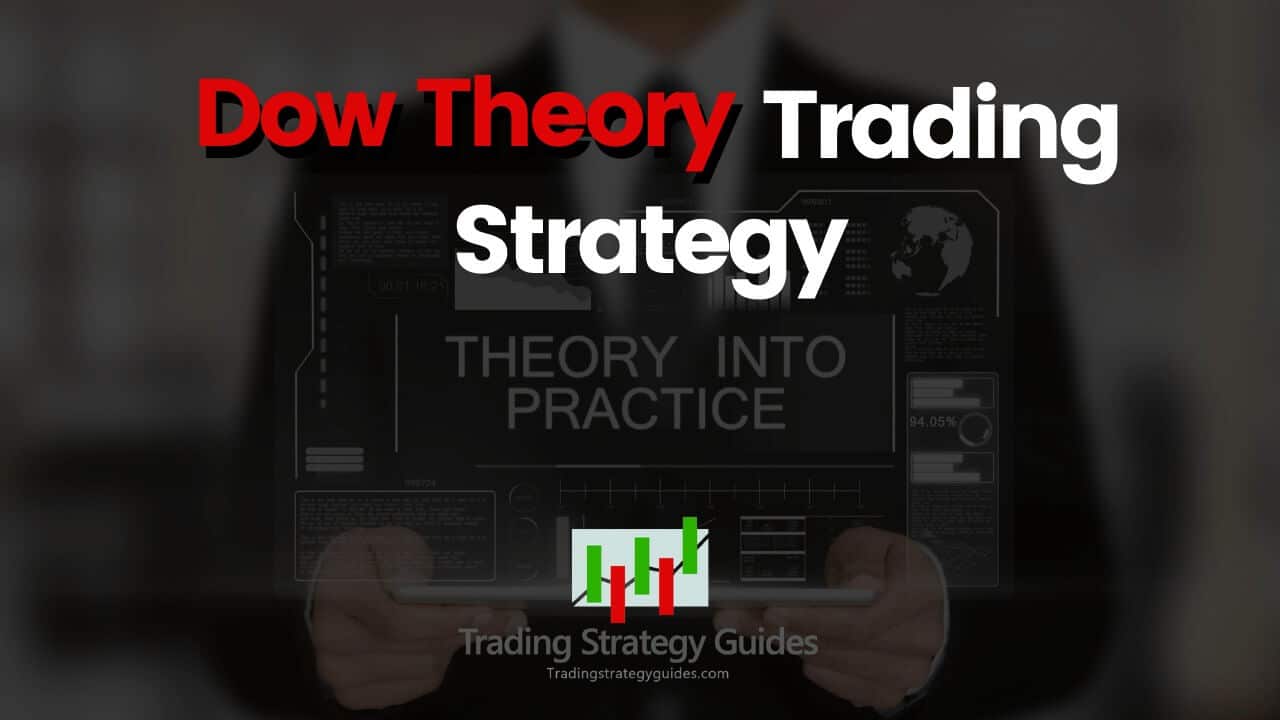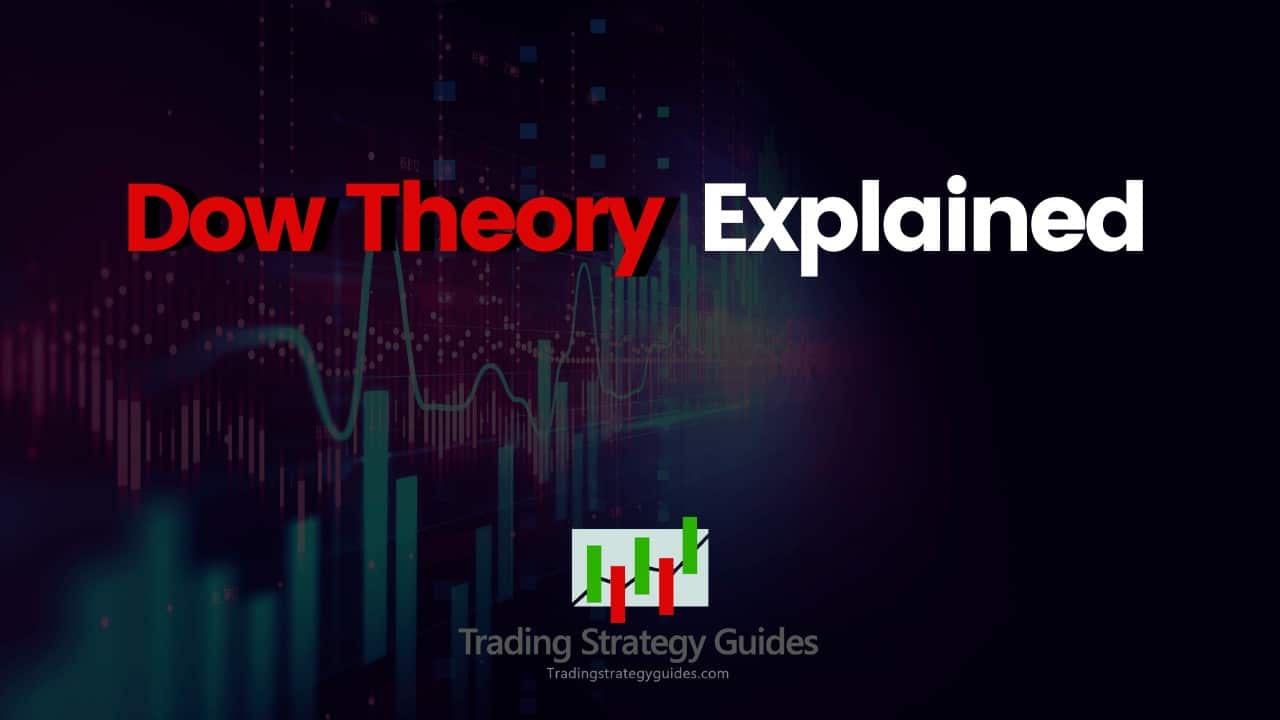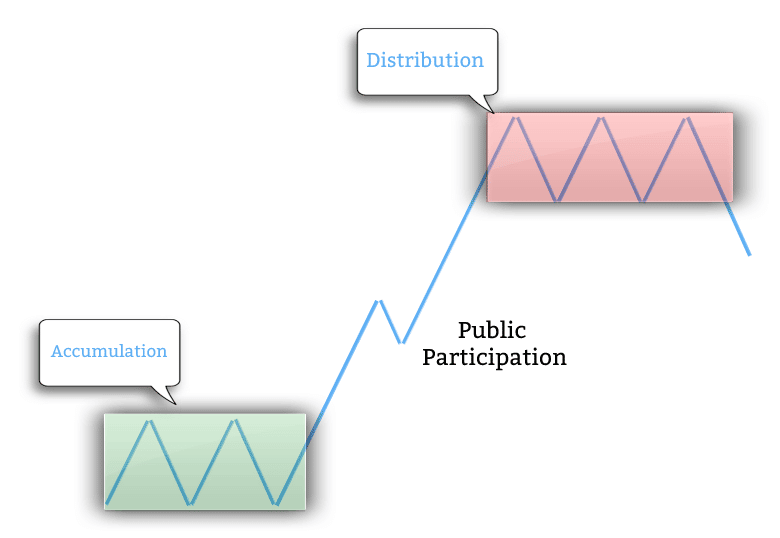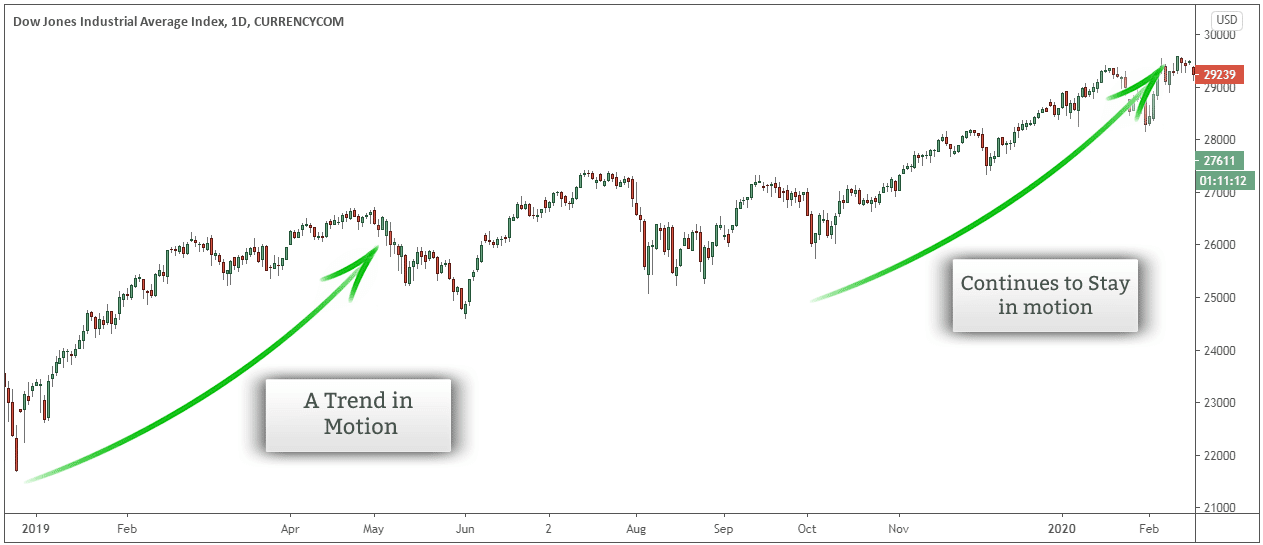Dow Theory Trading Strategy – Put Theory into Practice

Learn the Dow Theory trading strategy one of the oldest techniques of identifying a trend. In this guide, you’ll learn how price moves and how we as traders can select winning stocks. Dow Theory forecasts have been used for more than 120 years so; we’re going to put to the test: does Dow Theory work today?
If this is your first time on our website, our team at Trading Strategy Guides welcomes you. Make sure you hit the subscribe button, so you get your Free Trading Strategy every week directly into your email box.
The Dow Theory was a revolutionary method that changed the way stock investors traded forever. Charles Dow principles for analyzing market movements are also at the foundation of technical analysis. Charles Dow was not only the co-creator of the Dow Jones Industrial Average, but he was also a co-founder of the prestigious Wall Street Journal.
If you know anything about trading, you’ll recognize the Dow Theory principles. Even if you’re not aware, if you use technical analysis charts, you most likely use the Dow Theory. Basically, the Dow Theory in the stock market can help us accomplish three things:
- Alerts us of possible trend changes.
- Keep us on the right side of the market trend technical indicators.
- Give us a simple methodology to trade the markets.
Let’s get the ball rolling and explain what is the Dow Theory and how the Dow Theory forecasts future market trends.
Dow Theory Explained
Let’s define Dow Theory:
The Dow Theory is a collection of market concepts discovered by Charles Dow that aims to reveal how market trends typically behave. Dow believed that the stock market price moves the same way as the tides of the ocean rolling into the beach.
Check out our tips on how to make money in the stock market.
This is what Charles Dow wrote in the Wall Street Journal more than a century ago:
“A person watching the tide coming in and who wishes to know the exact spot which marks the high tide sets a stick in the sand at the points reached by the incoming waves until the stick reaches a position where the waves do not come up to it, and finally recede enough to show that the tide has turned. This method holds good in watching and determining the flood tide of the stock market.”
Basically, Dow used the Dow Jones Industrial Average (DJIA) and the Dow Jones Transportation Average (DJTA) to determine “the flood tide of the stock market.” The concepts behind his theory were very simple:
- In an uptrend, if the DJIA made a new high, the DJTA must make a new high to confirm the trend, otherwise, it might signal a possible change in the trend.
- In an uptrend, if the DJIA made a new low, the DJTA must make a new low to confirm the trend, otherwise, it might signal a possible change in the trend.
As you might have guessed, Charles H. Dow developed the first stock market index DJIA. Dow believed that it was better to analyze the stock market as a whole rather than to focus on single stocks.
See below a brief history of how the Dow Jones was created:
The History of the Dow Jones Industrial Index (DJIA):
In 1882, three prominent financial journalists Charles Dow, Edward Jones (unrelated to the financial firm), and Charles Bergstresser developed the Dow Jones and Company a financial newspaper. The goal was to give the reader an unbiased stock market analysis.
Dow and his fellow reported wanted to include a market average of selected stocks from the transportation industry. This later becomes the Dow Jones Transportation Average (DJTA).
The Dow Jones index is the oldest stock market index to still remain in use.
In 1889, Dow founded the Wall Street Journal, which is one of the world’s most popular financial newspapers. This helped popularize the stock average. And, in 1896, Dow developed the first average of industrial stocks as a precursor of the DJTA.
The original Dow Jones Industrial Index (DJIA) followed the largest 12 companies in each sector.
Nowadays, the DJIA is the go-to gauge of the US stock market health. Check out our stock market money flow chart.
The Dow Jones looks different today as there are 30 companies comprising the stock index.
Let’s get familiar with the 6 basic principles of the Dow Theory.
How Dow Theory Works
What are the Dow Theory principles?
The Dow principles are a set of rules designed to guide you in framing the market. The 6 Dow tenets can assist anyone to make more informed decisions.
Let’s break down the Dow Theory principles and then we’ll dive into each of them individually.
The six basic principles of the Dow Theory are listed below:
- The market discounts everything.
- The market has three stock trading trends (primary, secondary and minor).
- Trends have three phases (accumulation, public participation and distribution).
- The averages (indices) must confirm each other.
- Volume must confirm the trend.
- A trend is assumed to be intact until it has given definite signals that it has reversed.
Let’s look at each of the Dow principles in detail and see how it can apply the Dow Theory trading the markets.
1. Price Discounts Everything.
The first tent of Dow Theory is rooted in the efficient market hypothesis (EMH). The EMH theory states that everything that can be known is already discounted by the market price. The only thing that it’s not reflected in the stock price is human emotion.
From the first principle of Dow Theory we can draw the following valuable lesson:
The studying of price action is the studying of human emotion.
If you’re an advocate of technical analysis strategies you ascribe to this principle, which is at the base of all technical trading.
2. The Market Has 3 Trends.
The second principle of Dow Theory is that at any given time the stock price presents 3 trends that are working together:
- Primary trend.
- Secondary trend.
- Minor trend.
In Dow Theory primary trend is defined as the big picture trend that is in play for at least one year or more. The primary trend can be visible more on the higher time frames like the daily and weekly charts. The primary trend usually includes extensive price movements that are going to move at least 20% or more.
The secondary trend or the intermediate trend is a counter-trend move against the primary trend. The secondary trend is smaller in duration, usually lasting between 3 weeks and up to 3 months.
Note* In a bull market, the secondary trend is seen as a pullback, while in bear markets is seen as a rally.
Last but not least, the minor trends work the same way the secondary trend works in relationship to the primary trend. These are minor up and down moves that can last anywhere between 3 days and 3 weeks. According to Charles Dow, the minor trends are largely seen as the day to day noise.
All these three Dow trends can move in sync or out of sync.
The main idea is to look at the market in terms of the three trends, which is similar to multi-timeframe analysis.
Here is the lesson we can draw from the second Dow principle:
Use the weekly time frame to determine the primary trend, the daily chart to determine the secondary trend and intraday charts to determine the minor trend. When there is an alignment between these 3 trends we might have a trading opportunity
3. Trends have 3 Phases.
The third principle of Dow Theory claims every trend is constructed by 3 phases:
- Accumulation.
- Public participation.
- Distribution.
The accumulation phase is the starting point of a new trend where the smart money is buying into a stock. Then we start pushing up which attracts the eye of the general public aka the retail traders. At this stage, everyone starts to pile in before we reach a climax point. Uninformed investors continue to buy while at the same time smart money sells their stocks which forms the distribution phase.
4. The Averages Must Confirm Each Other.
The third principle of Dow Theory says that the Industrial Dow and Transportation Dow must confirm each other. Back in the 1900s, there were only two indices, both created by Charles Dow.
The theory behind this principle is that the goods produced by the companies inside the Dow index need to sell those goods. Consequently, the Dow Transportation needs to deliver those goods. If the transportation stocks are down, the theory says that they aren’t delivering as much of the goods and subsequently the industry stocks will fall.
On a price chart, this is easy to be verified.
Both averages need to be moving in the same direction i.e. if transportation stocks make a new high the industry stocks must make a new high. Consequently, if one makes a new low the other one must make a new low. When they are out of sync, there is divergence and a stock price reversal might be in cards. Check out the best indicator for reversal.
Nowadays, we have more stock indices like the S&P 500, NASDAQ-100, Russell 2000 Index and others that can be used in a more efficient way. In the 1900s the economies were run on railroads, but nowadays the world’s biggest stocks are the technological companies like Apple, Microsoft and Google.
5. Volume must confirm the Trend.
The fifth principle of Dow Theory says that volume should confirm the trend and should move in tandem with the trend. If there is a bullish candlestick trends, we should see an increase in buying activity. Consequently, if there is a bearish trend, we should see an increase in the selling pressure.
Note* Low volume is a possible signal of a weak trend.
The main idea is that volume must move with the primary trend.
6. Trends Tend to Stay in Motion.
The sixth principle of Dow Theory says that a trend is more likely to stay in motion than to reverse.
One classic stock market wisdom is “the trend is your friend,” which comes right back to Dow Theory.
The main idea you want to learn is to trade in the general direction of the market until it’s signaling that the trend has reversed.
Let’s see if the Dow Theory is still relevant in these days of high tech computers and indicators.
Moving forward, we’re going to answer this question:
Does Dow Theory work today?
Does Dow Theory Work Today?
The Dow Theory is constructed based on 100 years old principles, this begs the question:
Does Dow Theory work today?
Today’s markets are driven by high-frequency best trading algorithms, but since they are built by humans they follow the same patterns as years past. So, in part, the Dow Theory still works today. However, the way we apply it today should be different.
What do we mean by this?
Well, simply put it, the Transportation index DJTA is not that relevant today as it was a century ago. The technological stocks have more relevance so it’s prudent to replace the DJTA with the NASDAQ 100 while everything else remains the same.
Let’s discover a new approach to the Dow Theory forecasts that will allow profiting in uptrends and downtrends, even during a recession.
If this sounds interesting, check the Dow Theory trading strategy below:
Dow Theory Trading Strategy
This actionable Dow Theory trading strategy will allow anyone to ride massive trends in bull and bear markets. Keep in mind we’re going to use the DJIA in combination with the NASDAQ-100.
The Dow Theory buy and sell signals are straightforward.
Here is how to apply Dow Theory trading in a downtrend – buy signals.
We’re going to break down the Dow principles into 4 trading rules before we buy:
- Wait for a swing low in the primary trend to be established.
- A secondary upward trend must emerge.
- This is followed by a retracement that must exceed 3% in DJIA or NASDAQ (based on Robert Rhea).
- Both retracements must hold above the prior swing low in both DJIA and NASDAQ.
- Buy signal is triggered when the price in both DJIA and NASDAQ breaks above the secondary upward trend high.
Important Note: According to Charles H. Dow, the closing price is the most important price. Consequently, he only used the closing price when analyzing the price charts.
Below you can see the Dow Theory principles at work:
Use the same rules but in reverse for the Dow sell signals.
Final Words – Dow Theory Trading
In summary, the Dow Theory trading strategy is not a foolproof system that can forecast short-term trends but if you have the discipline and patience, it can help you trade the larger time frame trend. For that reason, the Dow Theory forecasts are more suitable for long-term stock investing.
The key concepts behind the Dow Theory are standalone principles that you can simply incorporate in your personal trading strategy. They can give you an extra layer of confirmation and possibly help you refine your entries.
If you can read between the lines, a good portion of the Dow Theory trading principles also pertain to the trading psychology or the mental aspect of trading. We invite new traders to continue using their own analysis along with the Dow principles.
Thank you for reading!
Feel free to leave any comments below, we do read them all and will respond.
Also, please give this strategy a 5 star if you enjoyed it!
[ratings]
Tim Black teaches the Dow Theory Trading Strategy in the video below!














It?¦s truly a great and helpful piece of information. I am satisfied that you just shared this helpful info with us. Please keep us informed like this. Thank you for sharing.